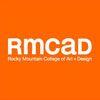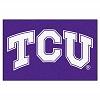

What are the top southwestern graphic design schools for 2021?
| Ranking | School | State | Top % |
|---|---|---|---|
| 1 | University of Texas at Austin | Texas | 2% |
| 2 | University of North Texas | Texas | 3% |
| 3 | Arizona State University | Arizona | 5% |
| 4 | Brigham Young University | Utah | 6% |
| 5 | University of Houston | Texas | 8% |
| 6 | Texas State University | Texas | 9% |
| 7 | Texas A&M University-Commerce | Texas | 10% |
| 8 | Rocky Mountain College of Art and Design | Colorado | 15% |
| 9 | University of Texas at Arlington | Texas | 15% |
| 10 | Oklahoma State University | Oklahoma | 15% |
| 11 | University of Arizona | Arizona | 20% |
| 12 | University of Utah | Utah | 20% |
| 13 | Baylor University | Texas | 20% |
| 14 | Colorado State University | Colorado | 25% |
| 15 | Texas A&M University-Corpus Christi | Texas | 25% |
| 16 | Utah State University | Utah | 25% |
| 17 | Texas Christian University | Texas | 25% |
| 18 | Texas Tech University | Texas | 30% |
| 19 | New Mexico State University | New Mexico | 30% |
| 20 | St. Edward’s University | Texas | 30% |
Our 2021 ranking of the Top 20 Graphic Design School Programs in the Southwest. We considered over 70 colleges in the Southwest with graphic design programs for this year's rankings. For an explanation of our ranking criteria, click here. For ranking purposes we define the Southwest as Texas, Oklahoma, Colorado, Utah, New Mexico, Nevada, and Arizona.

Founded in 1881, the University of Texas at Austin (UT Austin) opened its doors in 1883 with one building, eight professors, one proctor, and 221 students. Today, UT Austin is home to nearly 52,000 students enrolled in over 500 degree programs and fields of study in 18 colleges and schools. The College of Fine Arts, School of Design and Creative Technologies has several programs for aspiring graphic designers including BA, BFA, and MFA degrees in Design. In addition, the Center for Professional Education offers an online Graphic Design Certificate that consists of 13 sessions over 13 weeks.
BA and BFA Design students develop their research, problem-solving and critical thinking/making skills through studio-based courses, while elective courses and the university’s core curriculum emphasize the liberal arts. In their junior year, students must complete at least one professional internship, which may include working at major companies with offices in the Austin area. Just a few include Apple, Dell, EA Games, Frog, Google, IBM, Pentagram, and Samsung.
The BFA is a pre-professional degree program encompassing typography, image creation/manipulation, interaction design and 3D design that is intended to prepare students for employment in the field of design. During the senior year, BFA Design students undertake a capstone design project and show their work in a public exhibition at the Visual Arts Center.
The Design BA is an “equally rich and rigorous exploration of design as a field,” says the school, “but is intended for students who prefer the flexibility and breadth of a liberal arts degree to the more studio-intensive, pre-professional BFA degree.” BA students enroll side-by-side with BFA students in rigorous introductory design studio courses. In the final two years of study, BA students take fewer upper-division studio courses.
The MFA in Design is a 60 credit hour program that accepts exceptional students with preexisting design skills. The program prepares students for “thought and organizational leadership in the field of design or in fields where design is being utilized strategically. In addition to advanced studio work in established design disciplines,” students have the “opportunity to study, explore and work in disciplines that intersect with design.”
All students in the program “will enjoy a formal curricular partnership with another discipline on campus and develop a thesis that thoughtfully intersects design with another field such as business, anthropology, engineering, or art.” In addition, the MFA Design program offers preparation for college teaching in the field of design through a series of classes exploring design pedagogy.
Design graduate students share studio space and have access to many other departmental and university resources, including The Computer Lab, The Design Lab, The Digital Fabrication Lab, The Wood Shop, The Visual Arts Center, The Harry Ransom Center, The Materials Lab, The Foundry, and the Fine Arts Library.

Founded in 1890 as Texas Normal College and Teachers’ Training Institute, University of North Texas (UNT) serves nearly 41,000 students making it one of the top five largest universities in Texas. The school offers 109 bachelors, 94 masters and 36 doctoral degree programs in 14 colleges and schools.
Considered one of the nation’s top art schools, UNT has been educating aspiring artists since 1894. The school’s College of Visual Arts and Design (CVAD) houses the Design Department, home to the Communication Design Program, which offers a BFA in Communication Design with a Concentration in Graphic Design.
Students begin the program “by learning to use the basic principles of design and design thinking, and progress to learn image making, color theory and typography as they create a wide variety of visual communications,” says the school. Course highlights include Advertising Copywriting, Cause-Based Design, Communication Design Studio, Foundations – Space, Foundations – Systems & Transformations, Graphic Design, Graphic Design Advanced Campaigns, Image Making & Color Theory, Interaction Design, Publication Design, and Typography.
Other program highlights include intensive studio courses and the opportunity to complete a professional internship.
Students who complete the Graphic Design Concentration will gain the ability to generate original, creative messages and ideas, and develop a professional portfolio to submit to potential employers. Graduates “are regularly recognized in national and international design competitions and have a high placement rate at top design, interactive and advertising firms throughout the country.”

Founded in 1885, Arizona State University (ASU) serves more than 110,000 students across five campuses and more than 45,000 on one additional campus. The Tempe campus serves more than 53,000 students, making it the largest campus in the ASU system and one of the largest in the U.S.
The ASU Herberger Institute for Design and the Arts houses the Design School, which offers programs in the areas of Architecture, Environmental Design, Industrial Design, Interior Design, Landscape Architecture, Urban Design and Visual Communication Design/VCD (Graphic Design). Visual Communication Design (VCD) options include a Bachelor of Science in Design (BSD in Graphic Design), a Master of Science in Design (MSD) with a Concentration in Visual Communication Design (VCD MSD), and a Master of Visual Communication Design (MVCD).
The BSD “curriculum develops a strong foundation of design principles through lower-division studio and lecture courses, using this to build an overall understanding of how design can shape perception and meaning using visual media,” says the school. “Upper-division studio courses provide opportunities for students to work in collaborative teams addressing professional projects in information design, interaction design, exhibition design, animation, motion graphics, branding, publication design, web design, interface design and the multiple contemporary facets of sensorial design.”
The MSD for individuals interested in “advanced studies in visual language, history, theory, criticism and methodology, design processes and technology.” The degree “develops an understanding of contemporary graphic design issues through specialized research and design skills. It also prepares the graduate student for a career in graphic design education.” Course highlights for the program include Contemporary Issues (Seminar), Methods in Visual Communication, Qualitative Research and Design, and Visiting Designers.
In addition to an internship in teaching design, a major component of the MSD program curriculum is the Travel Studio. Completed in the fall semester of the final year, students have the opportunity to “travel all over the world” and “experience a foreign place or country for one week.” The trip is faculty led and the cost is inclusive within tuition fees.
The MVCD has two options—a two-year studio-based program and a three-plus program. The two-year studio program is designed for students with a degree in VCD or Graphic Design and a three-plus program (three years plus one summer) is designed to be a first professional degree for those students who do not have an undergraduate degree in VCD or Graphic Design. Course highlights for the programs include Advanced Exhibit Design, Advanced VCD Studio, Creative Environment and Collaborative Leadership, Dynamic Visual Representation, Information Design, Motion Graphics/Interaction Design, Principles for Collaboration in Design, Sustainable Visual Communication, and Technology for Design. Several internships are part of the program as well as Visiting Designers and the Travel Studio.

Founded in 1875 by The Church of Jesus Christ of Latter-day Saints (LDS), Brigham Young University (BYU) serves 30,745 undergraduate students—the largest undergraduate enrollment of any private university in the U.S. The school also serves close to 2,800 graduate students enrolled in 88 master's degree programs, and 32 doctorate programs. Around 187 undergraduate majors and 110 undergraduate minors are also offered in dozens of colleges and departments.
The College of Fine Arts and Communications, Department of Design offers a BFA in Graphic Design and a Graphic Design Fundamentals Certificate. The Certificate is 15 credit hours and includes the following courses: Introduction to Graphic Design, Typography, Graphic Design, Interaction Design, and Creating Online Media. The program prepares graduates for positions such as Design Assistant, Junior Graphic Designer, Junior Production Artist, and Marketing Production Artist.
The BFA in Graphic Design “simulates a professional studio experience with students working to solve complex visual problems” says the school. “As members of a small cohort group, students complete a variety of individual and collaborative projects under close faculty direction.” Course highlights for the program include 3D Design, Advertising, Bookbinding, Branding, Design Thinking, Entrepreneurship, Illustration, Interaction Design, Letterpress Studio, Motion 1 & 2, and Typography. Students in the program will complete the BFA Capstone Project and a required Professional Internship.
Student interns have the opportunity to apply their design skills in a real working environment, they will learn how to meet the needs of the client while preserving the integrity of the design principles they have learned in class, and interact with team members from all areas of expertise on a real-world project.
Graduates of this limited enrollment program (40 students) “will be able to create design solutions across multiple mediums, including print, interactive media, and film.”

Established in 1927, University of Houston (UH) serves more than 47,000 students enrolled in 250 undergraduate majors and minors, 108 master’s degrees, and 50 doctoral and professional degrees. The school houses 36 research centers along with more than 15 colleges and schools. The Kathrine G. McGovern College of the Arts houses the School of Art, which offers a BFA in Graphic Design and an MFA in Studio Art with a Concentration in Graphic Design.
The BFA includes coursework in design history, theory, methods and practices. Students “learn a range of design methodologies and techniques,” says the school “in addition to interdisciplinary collaboration, presentation skills, team building, community outreach, ethics and sustainable practices—all tools to become top competitors in the national design-job market and leaders within the profession.”
Upon completion of all coursework, undergraduate students will participate in a senior exhibition that “showcases a diverse portfolio of work including environmental, interactive, motion, print and web projects.”
The MFA in Studio Art with a Concentration in Graphic Design is a 60 semester-hour degree that includes 18 hours in the concentration 12 hours in art history, 24 hours of related arts, and six hours of graduate seminar. Upon completion of all coursework for the program, all graduate students must present their work in a thesis exhibition at the Blaffer Museum, with accompanying photographic documentation.

Created in 1893, Texas State University (originally Southwest Normal School) was established as a teacher’s college. Today, the school serves nearly 38,000 undergraduate, post-baccalaureate, master's, and doctoral students enrolled in more than 200 programs in 10 Colleges and Schools. The College of Fine Arts & Communication houses the School of Art and Design, which offers BFA and MFA degrees in Communication Design. The school says the program is “one of the largest public programs in the country.”
BFA students have three areas of professional study to choose from including Art Direction, Graphic Design, and Interactive Media. Course topics in art direction, brand experience, corporate identity, design research, environmental graphics, human centered design, interactive design, sustainable packaging and typography prepare students for professional practice within a designer/client relationship. Students may further their education with independent study courses and professional internships.
Communication Design courses are taught in a studio environment, with class sizes limited to approximately 16. Students have access to the Mitte Complex, which has Macintosh labs, an open lab for student use, digital color printing availability including RISO, digital still and video camera checkout, and a photography studio and a multidisciplinary innovation lab equipped with laser cutter, CNC router, 3D printer and die cutter.
The MFA curriculum is “designed to provide advanced study in the areas of corporate advertising art direction, graphic design, and digital media design. The graduate program will provide students with the following: advanced problem-solving methodologies, updating technological advancement relating to communication design, examination of historical events within the discipline, and emerging theoretical constructs.”
“Web-based delivery is heavily featured in course curriculum, as well as online video conferences, live chat, and blogging interfaces. In addition, the program offers courses via extended weekend seminars, evening courses, and independent directed study. This non-traditional structure allows active professionals to participate.” The MFA program also offers “limited graduate assistant positions for qualified students who wish to immerse themselves full time in their graduate studies.”
For students seeking a future career in higher education, the program provides the appropriate academic credential and the terminal degree in the discipline of visual communication design: the MFA.
“The exchange of ideas on an international basis is an important component of the MFA Communication Design program.” Guest professors from around the world visit the Texas State campus to” lecture and share their unique perspective on communication design with graduate students. In addition, selected students are encouraged to participate in international field trips to expand their knowledge in the field of communication design.”
Texas State University Communication Design students have been published in “prestigious design journals” such as CMYK, Communication Arts, Graphis New Talent Annual, Logo Lounge, PRINT, and Step Inside Design. Students have also received recognition in local, regional, and national competitions such as AIGA Flux, American Advertising Federation Awards, Art Director's Club of Houston, Austin Addy Awards, Creative Summit, The National Show, The One Show, and the San Antonio Addy Awards.

Texas A&M University-Commerce (TAMU-C) opened its doors in 1889 as East Texas Normal College in Cooper, Texas. Today, as the fifth oldest state university, A&M Commerce serves 10,000 students making it the second largest university in the Texas A&M University System.
TAMU-C offers 144 total areas of study at the undergraduate, master's and doctoral levels. Programs are offered in dozens of colleges and departments. The College of Humanities, Social Sciences, and Arts houses the Department of Art, which offers BFA, MA, and MFA degrees in Visual Communication (VisCom). The BFA program has three concentrations: Art Direction, Design, and New Media.
All VisCom Concentrations require the student to complete the 42-semester hour University Studies curriculum and a common core of freshman and sophomore-level art courses. Entry into the junior year of the program is by portfolio review and all courses above the sophomore level are taught at El Centro College in a state-of-the art facility in downtown Dallas.
VisCom Art Direction students will gain “proficiency in creating headlines, copy, layout and storyboarding, partnering with copywriting students, as well as in directing the work of designers, photographers, illustrators and other contributions,” says the school. Courses for the VisCom Design Concentration focus on “client driven projects such as packaging, paper systems, and client visual branding development.”
In VisCom New Media, “students study a variety of media including motion graphics, modeling, animation, video, gaming concepts, interactive web and mobile apps to become innovative multimedia designers.”
The BFA in Visual Communications is an intensive program that prepares students for professional opportunities in the fields of advertising and design.
The TAMU-C VisCom MA program “explores creative process innovation; design professional practice leadership, strategy, process and product, and creative marketing promotion grounded in a social and business perspective.” The program requires completion of a Capstone Project and Thesis. The VisCom MFA is a terminal degree designed for working professionals or designers with previous experience in the field of visual communication.
The MFA has two options: Thesis and Non-Thesis. Both programs include foundational courses, interdisciplinary classes, and pedagogy classes. The MFA Thesis Exhibition is the Capstone Project of the MFA degree and consists of a written thesis and an accompanying exhibition of original work.
Students in both the MA and MFA VisCom programs will work with graduate faculty, adjunct instructors, and professionals in the fields of design innovation and design business at the graduate facilities in Visual Communication located at the Universities Center at Dallas near the Arts District.

Rocky Mountain College of Art and Design (RMCAD) was founded in 1963 by educator and illustrator Philip J. Steele founded Rocky Mountain School of Art. Steele’s mission for this proprietary institution in the foothills of Colorado was to build a “community of creatives” that that would instill in all students a passion for creativity, innovation, and a desire for lifelong learning in the fine and applied arts. Today, better known as Rocky Mountain College of Art and Design (RMCAD), the school is considered one of the nation’s premier art and design institutions.
Serving more than 1,000 students, RMCAD offers 16 degree and certificate programs available in campus/hybrid and online formats. The Graphic Design Program, which leads to a BFA, consists of 123 credit hours including 15 credits in Art History, 30 in Liberal Arts, 18 in Foundations, 48 in Communications Design, and 12 in Studio Electives.
“Graphic Design students learn to evaluate research and understand design problems by creating processes for design solutions that can be used throughout their careers,” says the school. They learn “branding, advertising, user-experience, and more—all while building a professional portfolio to prepare for life after” graduation.
Other program highlights include annual award shows used as class assignments, international instructors, and visiting faculty. Students also benefit from “interaction with outside design professionals through workshops, presentations, and advanced teaching engagements that “deliver hands-on experiences with real projects.”
Graduates of the RMCAD Graphic Design Program are prepared to pursue titles such as Communications Manager, Creative Director, Digital Project Manager, Multi-Media/Interactive Media Specialist, Production Art Manager, Web Designer, and many others.

Founded in 1895, the University of Texas at Arlington (UTA) is a Carnegie Research 1 institution that serves more than 60,000 students. The largest university in North Texas and the second largest in the University of Texas System, UTA offers more than 180 baccalaureate, masters, and doctoral degree programs in nine colleges.
The College of Liberal Arts (CoLA) houses the Department of Art and Art History, which offers BA and BFA degrees in Design: Visual Communication (Graphic Design, Web Design, App Design, Game Design and Illustration) and an MFA in Visual Communication Design.
The BA program is more general in nature, while the BFA provides intensive, pre-professional preparation in the field of studio art. Course highlights for both programs include 2D and 3D Design, Digital Imaging, Digital Media, Drawing Fundamentals, Studio 2D and 3D, and Typography. The BA requires a Minor of at least 18 credit hours in studio art or other suggested areas such as anthropology, history, literature, modern languages, philosophy and psychology.
All students will complete Professional Practices. BFA students are required to participate in the Senior Exhibition, while BA students will complete a Portfolio Presentation course.
The MFA in Visual Communication emphasizes critical thinking, research, theory, along with “an awareness of the function of art and design in the world today,” says the school. Course highlights for the program include Creative Strategies, Critical Perspective in the Visual Arts & Visual Communication, Research in Studio: Intermedia, Research in Photography Digital Imaging, Research in Printmaking, and Research in Visual Communication. Students will also complete independent study, an oral exam, research paper, and Thesis Exhibition.
The MFA in Visual Communication requires 60 credit hours of study and typically, a three-year commitment of time.
Graduates of the Visual Communication Design programs at UTA have career opportunities such as Animator, Art Dealer, Art Director, Exhibition Designer, Graphic Designer, Illustrator, Photographer, Printmaker, Web/App Designer, and many others.

Oklahoma State University (OSU) was established on Christmas Day 1890. The school serves more than 36,000 students enrolled in nearly 300 programs across a five-campus system, five academic colleges, a veterinary school, and an osteopathic medical school. Nearly 25,000 OSU students are enrolled at the Stillwater campus.
The College of Arts and Sciences at OSU houses the Department of Art, Graphic Design and Art History, which offers a BFA in Art with a Graphic Design Option and an MFA in Graphic Design.
The BFA program begins with a foundation in visual communication, which allows students to develop skills in a variety of areas and media. The schools says “these skills are developed during instruction in traditional media, printing processes, and the use of industry-standard software; then applied to more difficult media such as in motion and interaction.” Highlights include App Design, Brand Identity, Interactive Design, Logo Design, Motion Design, Packaging Design, Packaging Graphics, Promotional Design, Symbology, Television & Film Graphics, Typography, UI/UX Design, Wayfinding, & Web Design. An internship is also part of the program.
BFA students graduating portfolio work will include “a variety of media from graphic design, motion design, and interaction design, such as posters, billboards, branding, logo and symbol design, website design, app design, television and film graphics.” With a “vast range of design work,” the program prepares students to pursue careers in Graphic Design and Advertising, or continue their education in Fine Arts MFA programs across the nation. Potential job titles include Art Director, Advertising Designer, Creative Director, Environmental Designer, Interactive Designer, Motion Graphics Designer, Package Designer, Publications Designer, Typographer, UI/UX Designer, & Web Designer.
Recent graduates of the program have been hired at Matchfire, Masterwork Artistry, Museum of East Texas, Oklahoma Visual Arts Coalition, and many others.
The OSU MFA is “the only graduate program specializing in a unique combination of Interaction Design, Motion Design and Visual Communication in Oklahoma and in any other Higher Education Institution in the region.” The program is a three-year, sixty credit hour, and terminal degree that “will develop students’ expertise as graphic designers in Interaction Design and Motion Design, while developing their research, presentation and writing skills.”
Course highlights for the program include Graduate Seminar, Graphic Design Graduate Studio, Interaction Design Graduate Studio, Motion Design Graduate Studio, and Teaching Practicum. A Thesis and off-campus summer internship are also part of the program.
MFA graduates will be able to “respond to both the creative demands of the graphic design profession and the research and teaching requirements of academia.”

Established in 1885, University of Arizona was the state’s first university. The school serves nearly 47,000 students enrolled in hundreds of bachelors, masters, and doctoral degree, first professional and specialist programs in dozens of colleges and schools. The College of Fine Arts houses the School of Art, which offers BFA and MFA degrees in Studio Art with an Illustration and Design (I+D) Emphasis. Separate Tracks in Illustration and Design are offered to undergraduates.
The I+D program “encompasses a diverse faculty with expertise in graphic design, illustration, letterpress, book arts, visual narratives, animation, motion graphics, information design, and interdisciplinary collaborations with the environmental sciences,” says the school. “These specializations are reflected in a broad array of curricular offerings including: field trips, team projects with community clients, internships, and study abroad programs.”
The Illustration Track provides “rigorous education in constructive anatomy,” says the school. Students will “learn to describe the human form realistically and expressively and find personal methodologies in traditional and digital media.” Graduates will leave the program with a high quality portfolio and a web presence.”
The Design Track “provides a foundation in design principles and methodologies, creative problem solving and digital processes.” As students advance in the program, they will gain “knowledge and skills in professional practice including identity systems, web design, typography, motion graphics, history, contemporary criticism, and theory.” Graduates will leave the program with a professional portfolio and “a broad understanding of the business of design as well as its potential as a medium of critical inquiry and community involvement.”
The MFA is a 60 unit terminal degree comprised of interdisciplinary, graphic design and illustration courses as well as seminars, and independent studies “developing a body of self-authored work that contributes to the broad and expanding field of illustration, design and art.”
“Focused studio and course structures explore the theory, philosophy, and making of contemporary illustration, design and art. The program provides a range of opportunities for focus in visual narratives, community engagement, social practice, environmental projects, and technology, with a firm grounding in contemporary and historical contexts.”
Students in all programs have access to studio spaces, computer labs with Wacom Cintiq Touch screens and animation stations, a digital imaging lab with large format printing, mounting and other services, letterpress equipment, photopolymer platemaking equipment, metal and wood type collections, binding equipment, darkrooms, wood and metal shops, sculpture foundry, and ceramics labs.
Students also benefit from external resources such as a library that houses an extensive book art collection, the Center for Creative Photography, the Poetry Center, and the University Museum of Art.

Founded in 1850, University of Utah serves more than 31,000 students enrolled in more than 200 degree programs in 17 colleges and schools. The College of Fine Arts houses the Department of Art & Art History, which is currently transitioning the curriculum in Graphic Design from a BFA in Studio Art–Graphic Design Emphasis to a four-year BFA in Graphic Design, with courses being rolled out successively between 2019–2022.
The “process-oriented curriculum” for the BFA program “engages students in the exploration of visual communication strategies and techniques across a variety of media,” says the school, and it is “designed to prepare students to enter the field as nationally-competitive creative professionals.” Students enrolled for the 2020-2021 academic year will take courses such as Action, Communication Design, Construct, Evidence, Illusion, Mapping, Matrix, Seeing, and Touch. This program also has a final portfolio requirement.
Other programs for aspiring graphic designers are offered in the Continuing Education & Community Engagement Department. Options include Marketing & Graphic Design Certificates including Content Marketing & Management, Creative Design Tools, Digital Marketing Management, and Front End Web Design.

Chartered in 1845 by the Republic of Texas, Baylor University is the oldest continually operating university in Texas. The School offers more than 250 programs to more than 19,500 students from all 50 states, the District of Columbia, and 98 countries. Programs are offered in 12 academic divisions.
Created in 1919, the College of Arts & Sciences is Baylor’s largest academic division consisting of 25 academic departments and eight academic centers and institutes. The College’s Department of Art and Art History offers a Graphic Design Emphasis within the Studio Art Major. The program, which leads to a BFA in Studio Art – Graphic Design, “offers students the opportunity to develop their hand and aesthetic skills, and conceptual development,” says the school. Students in the program will take liberal arts, marketing, and visual arts courses and they have the opportunity to complete an internship.
Course highlights for the program include Advanced Photo: Digital, Design Methods, Digital Media for Graphic Design, Identity Design, Marketing, Package Design, Type and Image, and Web Design. A Portfolio Preparation course is also part of the program.
Graduates of the program have gone on to “work in design studios and major advertising agencies.” Others have “started design studios and advertising agencies of their own.”

Founded in 1870 as the Colorado Agricultural College, Colorado State University in Fort Collins (CSU Fort Collins) is part of the three-school CSU System. The school serves around 28,300 students enrolled in more than 250 programs, over 50 minors, and several advising tracks in eight colleges and a graduate school.
The College of Liberal Arts houses the Department of Art and Art History, which offers two programs for aspiring graphic designers—the BFA with a Concentration in Graphic Design, and MFA with a Specialization in Graphic Design.
The 120 credit hour Graphic Design BFA highlights identity and branding, image-making, print and digital media, and professional design practices. Students in the program have the opportunity to gain technical exposure, interact with guest speakers, work on practice-based projects, and complete an internship. Students will also have the opportunity to participate in the organization and presentation the biennial Colorado International Invitational Poster Exhibition (CIIPE)—a core feature of the Graphic Design BFA Program.
Career outcomes for the program include Art Director, Brand Designer, Creative Director, Environmental Designer, Graphic Designer, Illustrator, Interaction Designer, Motion Graphics Designer, Production Designer, Publication Designer, Scene Designer/Illustrator, Storyboard Artist, and more.
The MFA with a Specialization in Graphic Design is a 60-credit, immersive program that “focuses on the artist as an agent of visual communication in society,” says the school. With emphasis on conceptual problem-solving and technical proficiency, graduate students are encouraged to create effective artistic expression in various print, digital, or interactive media. Graphic design theory, history, and professional practices are discussed regularly with faculty. Experimental solutions to student created goals are expected from participants in this program.
Other program highlights include a semi-private studio for the entire program and participation in organizing and presenting at the CIIPE. The “successful graduate student will develop an in-depth body of design work for an MFA qualifying exhibition. Students prepare a written thesis to accompany the MFA thesis body of work” and they will “present both their work and written thesis to their graduate committee in their MFA Thesis Defense.”

Texas A&M University-Corpus Christi (TAMU-Corpus Christi) was founded in 1947 as the University of Corpus Christi (UCC). When it opened on Ward Island, the school had 312 students. Today, as part of the Texas A&M University System, the school serves more than 12,000 students enrolled in nearly 90 degree programs in seven colleges. The College of Liberal Arts houses the Department of Art, which offers a BA in Graphic Design and a Studio Art MFA with a Graphic Design Major. The Department also offers a 21 credit hour Art Minor covers Art History, Graphic Design, and Studio Art.
The BA is a 120 credit hour program that requires 54 credit hours in Graphic Design and 18 Elective hours, which allows students to choose courses that complement their career path. Courses in Communication, Fine Art, Marketing, and Media Production are a few popular options.
Course highlights for the BA program include Client Solutions, Concept & Making, Design Advertising, Design Experience & Awareness, Design Studio, Emerging Technologies, Historical Perspectives of Graphic Design, Packaging, Publication, and UI/UX. Students will complete a Portfolio and Professional Practices course and they are encouraged to participate in the Departments internship program.
Ongoing internships are typically available with advertising agencies, city offices, local publications, non-profit organizations, tourist attractions, video production companies, and with small businesses and large corporations.
The 60 credit hour Studio Art MFA with a Graphic Design Major requires 51 hours in the major and nine elective hours. Program highlights include small class sizes, state-of-the-art facilities, and teaching assistantships. Students in the program may also add a Minor study area in Studio Art to enhance the degree. Areas include Ceramics, Drawing, Painting, Photography, Printmaking, and Sculpture.
MFA students are required to prepare a professional one-person MFA exhibition and Thesis Paper to graduate from the program.

Utah State University (USU) was founded March 8, 1888 as the Agricultural College of Utah. Today, USU is a public, land- and space-grant research that serves nearly 28,000 students across several campuses and centers, and dozens of extension offices. These include the main campus in Logan, three regional campuses (Brigham City, Tooele, Uintah Basin), the Comprehensive Regional College (USU Eastern with campuses in Price and Blanding), extension offices in 28 of 29 Utah counties, and the Ogden Botanical Center, Thanksgiving Point, and Utah Botanical Center.
USU offers around 400 undergraduate, graduate, and minor programs in eight colleges. Caine College of the Arts (CCA) houses the Department of Art + Design, which offers Art and Design, Music, and Theater Arts programs. Options for aspiring graphic designers include a BFA in Graphic Design and an Art MFA with a Specialization in Graphic Design.
BFA students “receive training in collaboration, innovation, theory, professional practice, technical competence, history, creative processes and sustainability,” says the school.
Program highlights include the Hashimoto Communication Arts Seminar (lecture seminars by professional guest artists in illustration and graphic design) and the opportunity to take an Advanced Internship/Coop designed for students needing “complexity and a more professional level of experience in the workplace.”
Course highlights for the program include 2D and 3D Design, Advanced Branding/Packaging Design, Brand Identity Design, Drawing, Graphic Interface Design, Illustration Concepts, Motion Design, and Type, Image, and Visual Continuity. A Senior Capstone Course is also part of the program.
Students will graduate with a professional portfolio that will help them land a position at “prestigious national and international design studios and advertising agencies.”
The Art MFA with a Specialization in Graphic Design consists of a variety of courses that involve working with all formats of print and publication design, as well as layout, symbols, trademarks, and typography. Animation, Digital Imaging, Illustration, Interactive Media, and Motion Graphics are also part of the curriculum.
Other program highlights include the opportunity to exhibit student work at several venues on campus and at national and international shows, “strengths in human/computer interface design” and a partnership with the Huntsman School of Business called Design Thinking, generous studio space, and access to more study abroad programs than any other department on campus.
Graduate students study each year in places such as Germany, Korea, Scotland, and Switzerland. The MFA Art Program also hosts visiting artists from around the world.
MFA Program graduates go on to work as artists and designers in their respective fields. Students also pursue careers as teachers in higher education, “a field in which graduates of the program have historically high placement.”

Texas Christian University (TCU) was Founded as Add-Ran College in 1873, Texas Christian University (TCU) serves nearly 11,500 students enrolled in 116 undergraduate, 65 master’s level and 38 doctoral programs in 10 colleges and schools. The College of Fine Arts houses the Department of Design, which offers a BFA in Graphic Design.
The program requires students to complete two-thirds of the credit hours at TCU university in the graphic design curriculum. “Several more in-depth topics courses round out the curriculum, including typography, advertising, packaging, corporate identity, editorial, web and interactive media,” says the school. A creative internship is part of the program as well as capstone classes, Portfolio & Marketing and Senior Thesis.
TCU Graphic Design BFA graduates have enjoyed a 100% job placement rate over the past four years. Graduates typically work as creative designers or art directors at leading design studios and advertising agencies such as Deep Focus, Loyalkaspar, Pentagram, The Magazine at Pace Communications, Twilio, and Warren Douglas Advertising.

Texas Tech University (TTU) was founded in 1923 as Texas Technological College (TTC). The college opened in 1925 with six buildings and an enrollment of 914. Today, TTU serves more than 40,000 students, making it the largest comprehensive higher education institution in the western two-thirds of the state of Texas. The school is also the only Texas campus to house a major university, law school, and medical school.
TTU offers more than 150 academic programs in 13 colleges and eLearning. The J.T. & Margaret Talkington College of Visual & Performing Arts (TCVPA) houses three schools (Art, Music, and Theatre & Dance) that serve around 1,100 undergraduate and graduate students—including DMA and PhD candidates. The School of Art offers an Art BFA with a Graphic Design Concentration.
In this 123 credit hour program, “students are exposed to a full range of topics and experiences, such as branding and identity design, publication design, internships, and interactive design,” says the school, such as CSS, HTML, Information Architecture, Project Planning, Software, UI/UX, and Usability. Courses for the program are sequenced. Highlights include 3D Design, Computer Design Methods, Design in the Community, Graphic Design Process, Publication Design, Symbols, Typography, Visual Systems, and Web Media Design.
During the final semester of the program, MFA students will complete Professional Practices in Graphic Design, Texas Politics and Topics, Language, Philosophy, and Culture, and an Art Elective such as Art History, Studio Art, or an Internship.
Graduates of the program hold titles such as Art Director, Freelance Designer, Graphic Designer, UX/UI Designer, Visual Communication Designer, Visual Content Manager, and Web Designer at advertising agencies, design firms, and in-house design studios.
Alumni work/have worked at AT&T, Conde Nast Traveler, Dwell Magazine, Fossil, H-E-B, IBM, JC Penny, M.A.C. Cosmetics, Nike, Paul Mitchell, Refinery 29, SW Airlines, Texas Monthly, The New York Times, Wired, and more.

New Mexico State University (NMSU) was founded in 1888 as Las Cruces College. The school consists of five campuses (Alamogordo, Carlsbad, Dona Ana, Grants and Las Cruces) that serve 22,360 students enrolled in more than 100 programs.
The College of Arts and Sciences is the largest college at NMSU, teaching every freshman and offering degrees to over 6,000 majors. The college houses 24 academic departments, including the Department of Art, which offers a number of degree pathways for aspiring graphic designers. Options include BA, BFA, and MFA degrees in Studio Art with a Specialization in Graphic Design. Students interested in enrolling at NMSU’s Alamogordo campus can earn an AAS or Certificate in Graphic Design.
The AAS and Certificate programs prepare students for entry-level positions in a broad range of industries. The 18 credit hour Certificate includes courses such as Desktop Publishing, Digital Imaging Editing – Photoshop, and Digital Video Production. The 61 credit hour AAS includes all Certificate coursework, plus general education, advanced, and elective coursework. Course highlights include Advanced Computer Illustration, Advanced Photoshop, Communication, Entrepreneurship, and Portfolio Design & Development.
The Studio Art BA provides a “solid background in materials, techniques and idea development across all media areas combined with art historical studies,” says the school. Students in the program have the opportunity to specialize or generalize in various areas, including Graphic Design.
The Studio Art BFA “provides students with a multidisciplinary understanding of contemporary visual arts.” In addition to Graphic Design, students may focus on several areas of specialization for an intermedia concentration. Potential options include Drawing, Media Arts, Painting, Photography and Lens-Based Media, and Printmaking.
The Graduate Department of Art “supports work in and across Ceramics, Graphic Design and Media Arts, Jewelry and Metalsmithing, Painting and Drawing, Photography, Printmaking and Sculpture. Program highlights include interdisciplinary graduate seminars, studio visits, University Art Gallery programming, and visiting artists and scholars lectures.
The MFA Studio Program culminates in an exhibition of the student’s creative work and a written thesis statement. A successful oral examination and defense of the thesis and exhibition is required for graduation.
Graduates of the Graphic Design Programs at NMSU are prepared to seek positions in Advertising, Design, Education, Entertainment, Marketing, Public Relations, Publishing, Web Design, and more.

Founded in 1885, St. Edward’s University serves more than 3,000 students enrolled in 50 areas of study in four schools and Graduate and Professional Studies. The School of Arts and Humanities house the Department of Visual Studies, which offers major and minor degrees in Art, Graphic Design, Photography and Media Arts, and Video Game Development, with additional Minors in Art History, Animation, and Visual Studies.
Students in the Bachelor’s Degree in Graphic Design will learn color theory and how to use typography and images. Course highlights include Art History, Design History & Theory, Foundation Art & Design, Lab I & II, Senior Studio, Typography, and Visual Studies. Other program highlights include hands-on experience through internships and mentors, study abroad opportunities, and volunteer experiences.
Graduates of the program attend graduate school, they work at creative agencies and studios as in-house designers, and many have even launched their own companies. Program alumni hold positions such as Art Director at Mighty Arsenal in Austin, Designer at FODA Studio in Austin, Senior Experience Designer at Accomplice in Austin, Software Engineer at Blackbaud in Austin, and UX/UI Designer at USAA.
